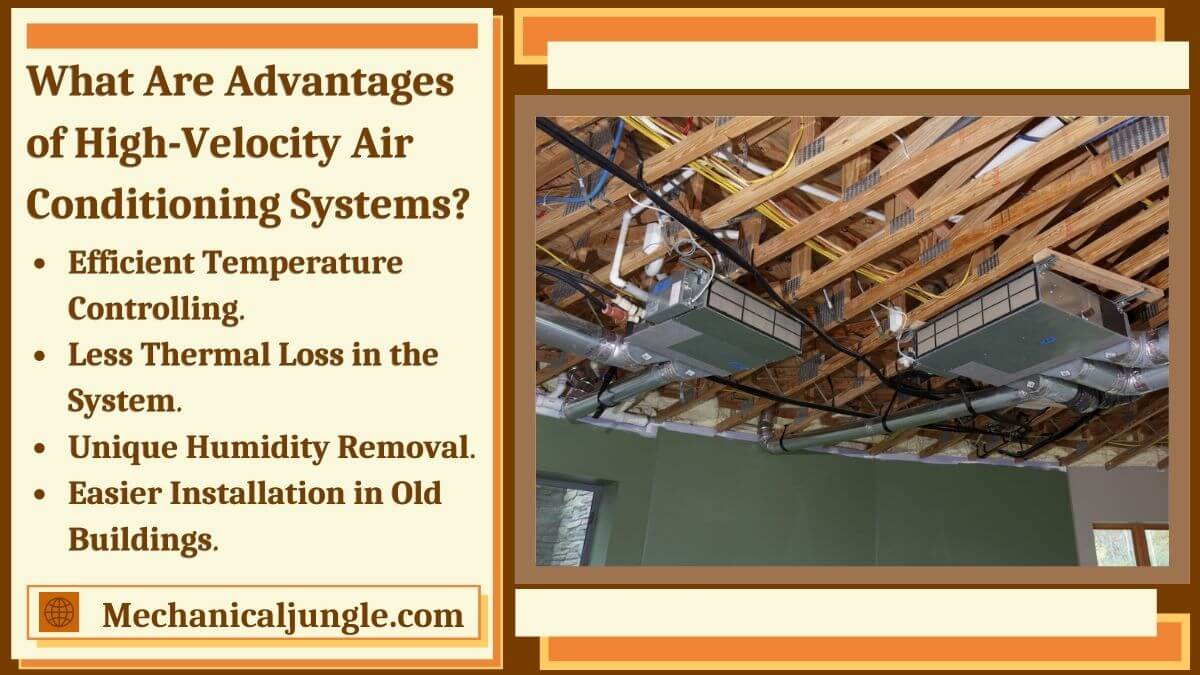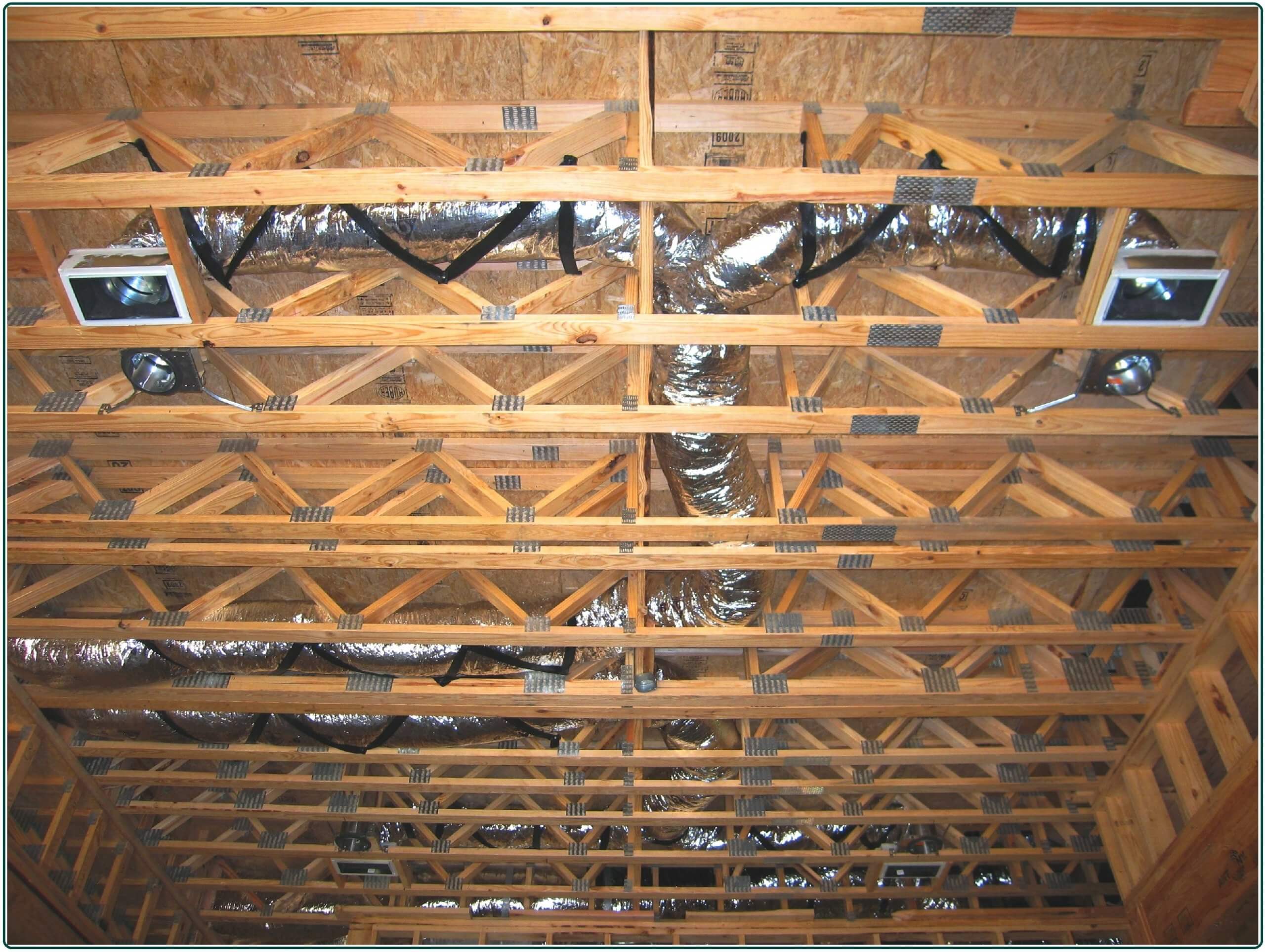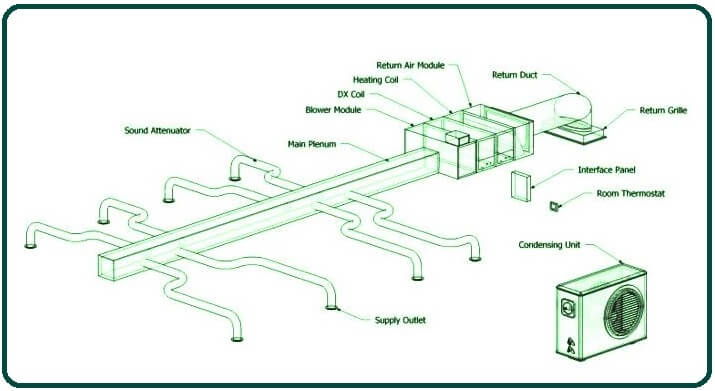Important Point
High-Velocity Air Conditioning Systems:
High-Velocity Air Conditioning Systems operate in much the same way as older HVAC systems. Hot or cold air comes from a heating or cooling source. That is usually the heat pump or compressor outside the house. Then, it travels through the house & enters the rooms through the vents. But, the similarities end there. Instead of large ducts throughout your home, high-velocity systems use very thin tubing.
The tubing is just two inches in diameter and is flexible. At the same time, the vents are very, very small. Most homes have vents at least six inches long and about a foot wide. A high-velocity vent is usually round and only about 5 inches across.
The hot or cold air then moves from the compressor or heat pump to the high-velocity air handler. This duct-and-vent pushes air through you with a higher pressure than an HVAC system. Because of this, air expands much more quickly in the area than it once was through the vent.
This means the room gets to the temperature you want faster than with other systems. This makes for better climate control. They are wondering why a high-velocity air conditioning system for your HVAC needs to be considered? Well, traditional air conditioning systems are popular for controlling the temperature of a building.
They efficiently move the air inside a home and manage humidity levels to a great extent. But they are not always the bests options, especially when it comes to installation in older homes that does not have an existing central air conditioning system. High-velocity AC systems (HVAC) are a better option than traditional ones to make it easier to implement this technology in an older building.
With their shorter ductwork, they cause less damage to building walls. This means that the cost of remodeling will be reduced due to the flexibility of high-velocity air conditioning systems. These new technologies are also the perfect solutions for new buildings.
It changes the temperatures of a rooms fasters than traditional AC systems, offers better moisture removal, and consumes less energy. However, high-velocity AC systems have some disadvantages that should be considered before making a decision.
I continue reading these articles to find out more about high-velocity air conditioning systems, their installation, and maintenance costs, as well advantages and disadvantages.
High-Velocity for Retrofitting and New Construction
Lower monthly costs and increased efficiency make a high-velocity system attractive in a new home. If you choose high-velocity when planning your construction, it is much easier to fit the system into your plans. However, the high-velocity is also very easily fitted into your existing home. Again, this is thanks to the small, flexible components.
Remember that tubing is only about two inches in diameter. It can also bend somewhat. That means it’s small enough to fit between studs in a wall or between ceiling rafters. Hence, you will not need to do any major work in your home. Installers can easily work around existing studs and rafters. They can also snake the tubing inside the walls.
These factors keep installation costs down. You won’t pay people to tear down any plaster or drywall to install it. Similarly, there is no need to repaint and paint the walls later. And, of course, less construction means less stress on you and your family.
What Is a High-Velocity System?
A high-velocity air conditioning system is a re-engineered form of a traditional air conditioner that creates a rapid flow of cold or hot air over a space. Also known as “small-duct”, this new technology is able to regulate the temperature of a room at an extraordinary speed compared to older air conditioning systems.
High-velocity AC systems also have smaller air handlers that make them easier to fit into tight spaces in the building. Thanks to their small ducts about two inches in diameter and insulated tubing, the system is also highly energy-efficient. Although it has been said that high-velocity air conditioning systems are noisy, most of the sound coming from them can be controlled.
How Does High-Velocity System Heating Work?
Established as a popular choice of the market, the high-velocity system works in the same way as the low-velocity air conditioning system. However, there is a major difference here that makes high-velocity air conditioning systems more efficient than older ones. As we mentioned earlier, the ductwork is minimal, and there’s no need for extra space.
The high-velocity AC system operates in exactly the same way as a showerhead. Small holes in the showerhead produce a high-pressure and low-velocity stream of water, regardless of the water pressure in the pipes. High-velocity air conditioners are intelligently designed to produce a high-pressure stream of air without consuming a lot of energy.
The cold or hot air in the system comes from a normal pressure heat pump or compressor. Just before entering the home, the air is moved through a high-velocity air handler that enables it to come out the vent with a pressure up to 4 times higher than that of a normal air conditioner.
The high pressure of the air coming out of the vent is optimal for a consistent mixing of the air in the room. No matters where the vents are located, the systems will help the airflow from the high-pressure area to the low-pressure area as quickly as possible.
What Are Average Costs of High-Velocity Air Conditioning Systems?
High-velocity air conditioning systems require special ductwork, so their installation costs are higher than those of traditional air conditioning systems. However, in many cases, high-velocity AC systems are an ideal choice, and here it is: For new construction, the high installation cost of high-velocity air conditioning systems can be neglected;
Especially if you consider the usability and low cost of maintenance, compared to traditional AC systems, high-velocity air conditioning systems experience 25% less leakage in the ducts, which means better usability, greater efficiency, and less energy consumption.
Reducing the size of HVAC systems and equipment will also reduce maintenance costs. This is why high-velocity air conditioning systems are an ideal option for saving money in the long term.
In the case of holders building, installations cost becomes more economical, given the fact that the cost of structural renovation is much lower than installing a conventional AC system with large ducts.
Also, Read: How Do Aircraft Brakes Work | How Aircraft Brakes Work | Brake Design | Aircraft Brakes
Do High-Velocity Air Conditioning Systems Make Noise?
Many people believe that high-velocity air conditioning systems are noisy. However, this is possible only if the system is not fully installed. In some cases, if too much air the pushed through the fewer tube, it results in noise during the operation of high-velocity air conditioning systems.
Reducing the risk of a noisy AC system requires adequate tubing and a reasonable number of outlets. Many installation companies use complementary equipment to eliminate the sound emanating from high-velocity air conditioning systems. It is also recommended to use a damper valve in the outlet and insulate the supply tubes.
What Are Advantages of High-Velocity Air Conditioning Systems?
#1. Efficient Temperature Controlling
The system is designed to cool and heat the building better than traditional air conditioning systems. Small ducts in the system enable air to enter the space with a pressure up to 4 times higher, which is why the temperature movement in a room is managed.
#2. Less Thermal Loss in the System
The tube is completely insulated for less air leakage. Therefore, the level of energy consumption has dropped significantly.
#3. Unique Humidity Removal
In high-velocity air conditioning systems, due to the high pressure of the air exiting the outlet, humidity levels can be reduced by as much as 30%.
#4. Easier Installation in Old Buildings
The ductwork required for high-velocity air conditioning systems is much smaller than for traditional ones. All units in systems are versatile enough to be installed in any location, even attics, closets, and basements. This is why high-velocity air conditioning systems are a good choice for retrofits.
What Are the Disadvantages of High-Velocity Air Conditioning Systems?
#1. Cost of Installation
Where renovation is needed, installing a high-velocity air conditioning system is a cost-effective option. But for new construction projects, a modern system like small-duct can seem expensive to purchase and install. However, for all homeowners, high-velocity AC systems can save a lot of money in the long run, especially in terms of energy consumption.
#2. Being Noisy and Loud
High-velocity AC systems generate noise, mainly because too much air is being pushed through a few tubes. To solve the problems, an installer can use an outer layer of insulation around the ducts to absorb sound.
#3. Physical Discomfort
The high-pressure air coming out powerfully from the vents can feel physically uncomfortable. To address these problems, it is always recommended that ducts be placed away from places where residents can stand, sit or lie down.
What Is High-Velocity Air Conditioning?
Energy Stars estimates that about 20% to 30% of the air in traditional residential ductwork is lost through “leaks, holes, & poorly connected ducts.” It’s very useless. Unlike traditional air conditioning systems, small-duct high-velocity air conditioning (SDHV) systems use high pressure to achieve fully mixed air, creating maximum cooling or heating as they are not only for AC, from floor to ceiling.
This distinct design creates very little opportunity for damage, with a 5% or less loss in air leakage with high-velocity air conditioning systems. There is fewer surfaces area for energy loss, mini-ducts are better insulated, & joints are better sealed through the use of gaskets.
This is made possible by the smaller size of the vents and ducts, which means you have to install less complicated as well as less invasive methods to get there.
Without getting too swayed by the technicalities, the biggest difference between this and traditional air conditioning systems is how they are cycled. Traditional AC systems turn on and off as directed by the thermostat. High-velocity air conditioning systems also cycle on and off as needed, but the air handler operates continuously to maintain pressure within the system.
The result is less drastic power fluctuations, as well as the elimination of hot and cold spots. Traditional HVAC systems have about 6″x12″ square vents, while a high-velocity vent is typically round and only 3-5 inches in diameter. That smaller size means less damage to your ceiling or floor and less visual distraction as well.
Frequently Asked Questions (FAQ)
High-Velocity Air Conditioning System
A high-velocity air conditioning system is the re-engineered form of conventional air conditioners that creates a faster flow of cool or hot air into a place.
High-Velocity Ac System
A high-velocity AC system’s ability to move air at four times the speed of a traditional air conditioning system means that hot air pockets don’t stay for long.
High-Velocity HVAC System
High-velocity HVAC systems function similarly to traditional HVAC systems. A heat pump or compressor on the outside of your home creates hot and cool air, then sends it into the home through ducts where it’s vented out into the rooms.
High-Velocity System
High-velocity systems work similarly to older HVAC systems. Hot or cool air comes from a heating or cooling source. That’s usually a heat pump or compressor outside the home. Then, it travels through the house and enters the rooms through vents.
High-Velocity Air Conditioning Cost
High-velocity air conditioning systems need special ductwork, therefore their installation costs are higher than conventional air conditioning systems and are popular for controlling the temperature of a building.
Cost of High-Velocity Air Conditioning System
Continue reading this article to find more details about high-velocity air conditioning systems, their installation, and maintenance costs, as well as their advantages and disadvantages.
High-Velocity Air Conditioning Costs
By reducing the size of the HVAC systems and equipment, maintenance expenses will decrease as well. This is why high-velocity air conditioning systems are an ideal choice for saving money in the long term.
High-Velocity Ac Units
A high-velocity AC system uses sealed tubes, which prevent the air from leaking out. That means less air needs to be cooled and your system can work more efficiently while using less energy.
The HVAC Outlet
The HVAC Outlet is a national leader for online Home Comfort Heating and Air Conditioning space. We specialize in offering our customers heating, ventilation, and air conditioning quality products, including ductless air conditioners and room air conditioners.
Ideal-Air HVAC
In Wellesley, Framingham & Ashland, MA, your best choice is Ideal Air HVAC. We offer comprehensive heating and cooling services for homeowners in the area.
Like this post? Share it with your friends!
Suggested Read –
- What Are Air Brakes
- Refrigeration System Components
- Difference Between Orthogonal and Oblique Cutting | Orthogonal Machining
- What Is Magneto Ignition System | How Does an Ignition System Work | How Does a Magneto Work | What Does a Magneto Do | Magneto Ignition System
- What Is a Synchromesh Gearbox? | Principle of Synchromesh Gearbox | Construction of Synchromesh Gearbox | Working of Synchromesh Gearbox
- Working of Constant Mesh Gearbox | What Is a Constant Mesh Gearbox? | Different Gear Ratios in Constant Mesh Gearbox | Construction of Constant Mesh Gearbox
- What Is Cupola Furnace? | Cupola Furnace Design । Cupola Construction | Purpose of Cupola | Working Principle of Cupola Furnace: | Advantages of Cupola Furnace | Disadvantages of Cupola Furnace | Applications of Cupola Furnace






Leave a Reply